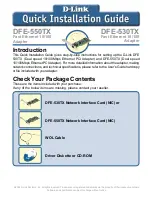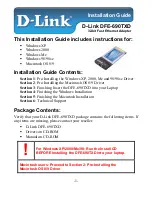
Operating Instructions
MECip
Release version/date: R2.4 / March 2019
© 2001-2019 TAPKO Technologies GmbH
Im Gewerbepark A15, 93059 Regensburg, Germany
Details, modifications and corrections may be subject to change without notice. TAPKO gives no warranty for the accuracy of the document. All rights reserved.
Product description
Connectors, buttons and LEDs description
The MECip media coupler connects both media KNX IP and KNX TP.
Used as KNX IP Router, it couples the KNX IP/Ethernet media to the TP
bus system. KNXnet/IP routing and tunnelling are supported.
MECip is able to filter the traffic according to the installation place in
the bus system hierarchy and according to the built-in filter tables for
group oriented communication. Configuring from the subline can be
blocked. For KNX devices, MECip provides commissioning, configuring,
visualization, protocolling and diagnostic operation. Operational and
filtering states, malfunction and faulty communication are indicated by
LEDs. Filtering can be temporarily deactivated by a single button press
(eases commissioning because of short-time access to other lines).
Extended frames and long messages with up to 240 bytes APDU length
are supported. As UPnP is available, MECip is shown as network device.
With a browser a comfortable front-end can be accessed to read out
device settings, remotely activate functions (Progr. Mode, set tunneling)
and watch a 30 min busload history diagram. Also, the integrated
bootloader function enables remote firmware updates via IP/Ethernet.
MECip is a rail-mounted device for installation in distribution boards on
35 mm DIN rails. Supplied by the KNX bus line, the device does not
require an additional power supply. KNX IP devices can be connected
by a standard RJ45 connector directly, and also via Ethernet networks.
Requirements of Directives EMC, RoHS and LVD are met. Standards for
residential, commercial, and industrial environments are fulfilled. The
full text of the EU declaration of conformity is available at the following
State IP (Main line)
green:
Main line OK
orange: Manual Function active
Bus state KNX TP (Subline)
green:
Subline OK
Telegram traffic IP (Main line)
green (blinking):
Telegram traffic extent
red (blinking):
Transmission error
Telegram traffic KNX TP (Subline)
green (blinking):
Telegram traffic extent
red (blinking):
Transmission error
Group Address routing
green:
Filter active
orange:
Route all
red:
Block all
<off>:
Main line / subline different
Ethernet connector
Physical Address routing
green:
Filter active
orange:
Route all
red:
Block all
<off>:
Main line / subline different
Function button
Programming button
Programming LED
red:
Programming Mode active
red (blinking):
No IP connection
KNX TP connector
Technical specifications
Power input
Power supply:
Current consumption:
Housing
Dimensions (HxWxD):
Mounting (IEC60715):
Width in space units:
KNX bus connection:
IP connector:
Weight:
Environmental conditions
Operating temperature:
Storage temperature:
Ambient humidity:
21…30 V DC SELV
< 20 mA
90 x 36 x 71 mm
35 mm top-hat rail (TH35)
2 modules at 18 mm
KNX connector (red/black)
Ethernet (RJ45, female)
68 g
-5…45 °C
-20...60 °C
5…93 % (non-condensing)
Electrical safety
Pollution degree (IEC60664):
Protection type (IEC60529):
Protection class (IEC61140):
Overvoltage category (IEC60664):
Approbation (ISO/IEC14543-3):
CE Marking
EU Directives:
Standards:
2
IP20
III
II
KNX-certified
LVD
(2014/35/EU)
EMC (2014/30/EU)
RoHS (2011/65/EU)
EN50491-5-1/-2/-3
EN50581
EN60950-1
EN61000-6-2/-3
IEC60950-1
Mounting, commissioning and safety notes
Installation and maintenance
After connection to the KNX bus system, the device works with its
default settings as intended
Warning
: Do not connect to 230 V. The device is supplied by the
KNX bus and does not require any additional external power supply
The device may only be installed and put into operation by a
qualified electrician or authorized personnel
For planning and construction of electric installations the appropriate
specifications, guidelines and regulations in force of the respective
country have to be complied
For mounting use an appropriate equipment according to IEC60715
Installation on a 35 mm DIN rail (TH35)
Connect the KNX bus line as for common KNX bus connections with a
KNX bus cable, to be stripped and plugged into a KNX TP connector
Do not damage electrical insulations during connecting
Installation only in dry locations
Accessibility of the device for operation and visual inspection must be
provided
For changing the configuration use the ETS
The housing must not
be opened
Protect the device from
moisture, dirt and
damage
The device needs no
maintenance
If necessary, the device
can be cleaned with a
dry cloth
In the case of damage
(at storage, transport)
no repairs may be
carried out by
unauthorized personnel
Configuration details
and ETS database:
1
2
3
4
5
A
6
B
C
7
D




















